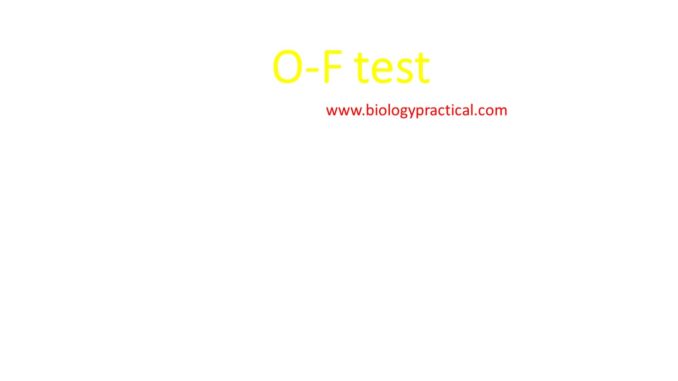
Objective
- to detect whether the organisms are oxidative or fermentative .
Principle:
The principle of this biochemical test is to detect the change in colour of the O/F medium after 24 hours of incubation of the organism.
During the catabolism of carbohydrate i.e breakdown or degradation of complex organic molecules , certain amount of energy is released and most micro organism have capability of catabolizing carbohydrate.
Both the extracellular and intracellular enzymes are necessary for the degradation of carbohydrate. Extracellular enzymes degrade the large complex carbohydrate into simpler compounds which can pass to the cell. The intracellular enzymes catabolize these simpler compounds to generate energy. The end product of this degradation is used in glycolysis for the generation of energy.
Glycolysis is one of the metabolic pathway in which simple sugar is converted in a form of energy as ATP. If glucose, after entering a cell is catabolized aerobically the process is oxidative metabolism, where molecular O2 serves as the final electron acceptor. If glucose is catabolized aerobically, the fermentative metabolism takes place where organic molecules serves as the final electron acceptor. The metabolic end product of carbohydrate fermentation can either be the organic acids like lactic, formic or acetic or other acid and gas like H2 OR CO2.
Whether an organism is oxidative or fermentative can be determined by using Hugh and leifson’s medium ( O/F medium). In this method, two tubes are used, one open to the air and the other sealed with paraffin to create anaerobic condition. By utilizing glucose results in production of acid which changes the colour of medium to yellow. Change in colour of medium to yellow in both tubes indicates positive fermentative test while change in colour of only one media ( open tube) suggest oxidation. Certain micro organism which donot use glucose but rather use nitrogen changes the medium colour to blue due to the production of alkaline end products.
Requirements
- Two tubes o O-F medium.
- Fresh cultures of E. coli and Klebsiella
- Paraffin oil
- Inoculating wire.
Procedure of O-F test
- Take two test tubes containing O-F media and label with the name of the given organism.
- With a sterile inoculating wire, stab the single sample organism in both O/F medium tubes.
- Seal one of the medium with 1ml sterile paraffin oil to create anaerobic condition
- Incubate both the tubes at 37° for 24 hrs.
- Observe the color development in both the tubes after proper incubation
Result interpretation:


|
Open tube |
Sealed tube |
Interpretation |
| Yellow | Green | Oxidative organism |
| Yellow | Yellow | Fermentative organism |
| Green | Green | Does not utilize carbohydrate |
- Pseudomonas aeroginosa: Oxidative organism
- E. coli: fermentative organism
